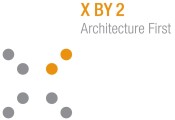FARMINGTON HILLS, MI — (Marketwire) — 01/06/12 — What will be the top IT challenges and trends for the property and casualty, health, and life insurance industries in 2012? , a consulting firm specializing in enterprise and application architecture for insurers, has named nine, not ten, because the industry has enough to handle already.
“We-ve chosen the issues based on what we believe will have the widest impact on core business and technology initiatives in 2012 because enterprise architectural challenges and opportunities are ultimately concerned with both,” said X by 2 principal K. Ram Sundaram.
These are the year-s top challenges and opportunities, according to X by 2-s Qasim Hussain, Yasir Hussain and Frank Petersmark:
In 2012, boards will be plugged into what the CIO and the IT function bring to the table. The profitability and investment stakes are too material to be ignored any longer. Boards will be focused on not only the current state of IT and the competitive capabilities it should be leading and supporting, but also the strategic technology trends, opportunities, plans and initiatives that will be crucial to the company-s future success.
Unwieldy and abstract enterprise architecture strategies and plans that don-t add tangible value to the organization are as yesterday as smoking in the office. Instead, forward-thinking insurance carriers are focused on developing and deploying architectural platforms that promote product and service agility, flexibility, and responsiveness. Key components of such platforms will be the ability to dynamically configure and combine new products and services to meet a particular consumer demand, and the ability to quickly develop and deliver new channel services and experiences that add value to consumers.
. As adoption of electronic health record (EHRs) increases, so does the amount of data being captured about patient-care management, delivery practices and health care outcomes. The challenge will be for provider organizations and health insurance companies to exchange and use patient health care data to streamline care management and delivery practices to achieve better outcomes and lower costs.
. Informatics will be the foundation of insurers- ability to explore innovative provider and member-facing strategies. These can range from alternative-payment incentives to developing tiered provider networks to consumer empowerment. The key to this progression will be data mastery — the ability to effectively aggregate, analyze, and make information actionable. This will help carriers identify and evaluate systemic improvements in care processes and measure their effectiveness.
. The power base of knowledge continues to shift from carriers to consumers, who now can understand their choices, and shop for specific products that fit their specific needs. This will have a significant impact on the strategies and operational approaches for business and IT divisions, requiring them to rethink their approaches to product and services deployments, as consumers will increasingly require portfolios of product choices and ease of access to the information and analytics. Life insurers will need to convert their current IT platforms that don-t serve these emerging needs into platforms that are much more open, accessible, responsive, and flexible.
. The decades-long industry effort to make the leap from the tried-and-true mainframe platform to distributed, cloud, and mobile platforms remains an ongoing reality for the industry. The stakes have changed, however, from an expense-model play to a competitive-advantage play. The insurers that finalize their transition sooner rather than later will be better positioned for agility and responsiveness in their respective marketplaces. What used to be a nice-to-have is now a must-have, and life insurers that fail to address their modernization issues will find themselves on the outside looking in.
Life insurers will push to leverage their significant investment in gathering policyholder data for competitive advantage. This trend will accelerate in 2012 as carriers look for new opportunities to offer specialized products to discrete segments of their current policyholders and prospects. Those carriers that make the required investments in people and tools in this area will be well positioned to reap market rewards.
. If 2011 was the year that companies discovered gold in the data stores they had developed over years, then 2012 will be the year they begin to mine those buried riches. Advanced analytics, predictive modeling, and precision data mining will be the focus of most companies as they strive to leverage the investments they have already made in data-turned-into-strategic-and-operational competitive advantage. To accomplish this, insurers will have to have their data houses in good order, and have their information management act together.
Smart phones and other mobile devices are ubiquitous. More “mobile-ites” are agents, policyholders and insurance company employees, and they will increasingly expect to interact with function and feature-rich mobile applications from their insurer. Carriers that fail to meet these expectations will see their policyholders and employees vote with a single click of their fingers.
X by 2 () provides architecture design, planning, oversight, and turnaround services on transformative enterprise-scale business technology initiatives. Clients include national and regional life, health and property-casualty insurers, and healthcare organizations.
Contact:
Henry Stimpson
Stimpson Communications
508-647-0705


You must be logged in to post a comment Login